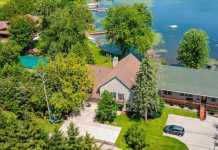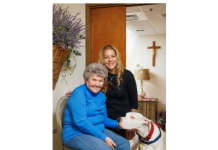Washington County, WI – Over the last 15 years, Dave Bohn has been writing down memories of his childhood, growing up on the family farm just south of West Bend on Hwy P. He hopes his writings will preserve the often-overlooked stories of ordinary farmers and everyday farm life in rural Washington County during the Great Depression through the eyes of a local farm boy.
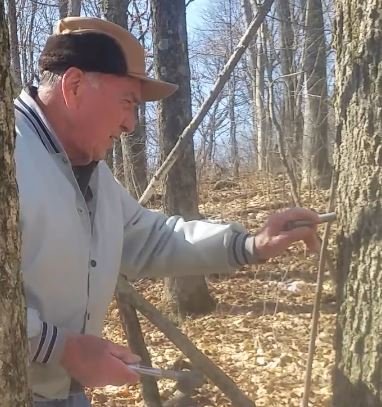
My brother Tom and I started making maple syrup a few years before I went into the service in 1951. I was probably 17 or 18 years old when I tapped my first tree. Dad had done it a little when he was a kid, so he knew what to do. I guess Dad just wanted us to know how to tap trees to make maple syrup, so we decided to give it a try. Dad just told us how it was done, but we did everything on our own.
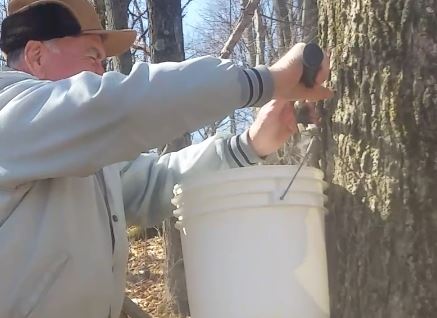
We had to go into our neighbor’s (Louis Schloemer) woods for the maple trees because we really didn’t have any on our farm. Louis didn’t care if we went into his woods to tap the trees. Things were different back then. We tapped five or six trees each year and it was just kind of a hobby. Dad had us use a small 5/8-inch electrical pipe for a tap. We sawed the pipe into about four-inch sections and used a hand-cranked drill that we would turn with our hand. It would tap about a half-inch hole into the tree and we drilled into the tree about 1-½ inches. We only wanted to get into the sapwood portion of the tree, not the heartwood. Then we’d use a hammer to pound the electrical pipe tap into the tree. It had to be a snug fit. We would put a nail in the tree and hook the handle of a one-gallon Karo Syrup bucket on the nail below the tap to catch the running sap.
Once the sap started to run, we brought the sap home and Mom cooked it down on the stove inside the house. We maybe had three to four gallons of raw sap. It is about a 30 to 1 ratio of raw sap to finished syrup, so it wasn’t much syrup that we got out of it. If we just got a good taste of the syrup, that was all.
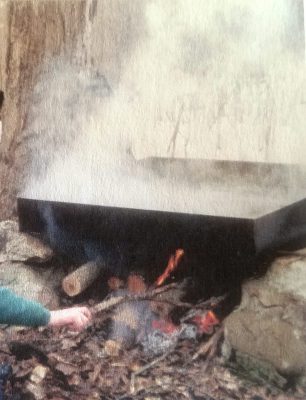
Tom and I tapped trees to make maple syrup for a few years before I went into the service. My brother Tom, went into the service after I returned, as they would only draft one son at a time if they were from a farm. Tom didn’t continue tapping the trees while I was gone. When I got back from the service, I didn’t have the time, as I was busy working and then I started my own business and a family.
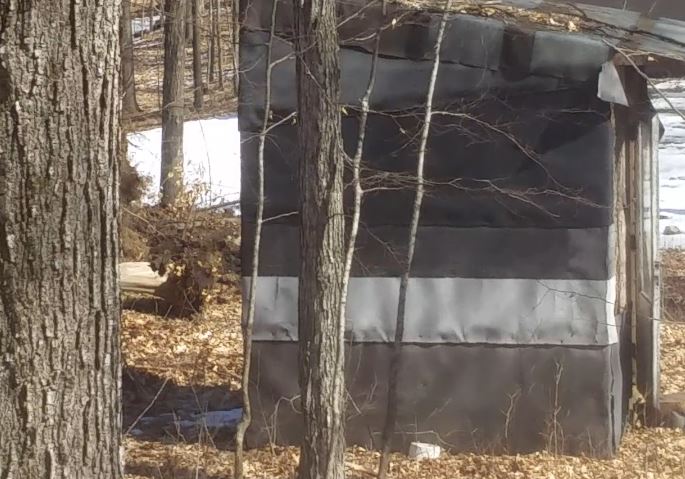
But later on, sometime in the 1970s, I started making maple syrup again. I still went to Louis Schloemer’s woods to tap the trees. When I bought my aunt and uncle’s farm in Slinger, I found a good stand of maple trees, so I started tapping those. It was a hardwood forest, but the cows would go through the woods and had kept the brush under control, so it was relatively easy to walk through. Maple trees need a little room to expand, so the cows were helpful to the maple trees, as they kept the underbrush down.
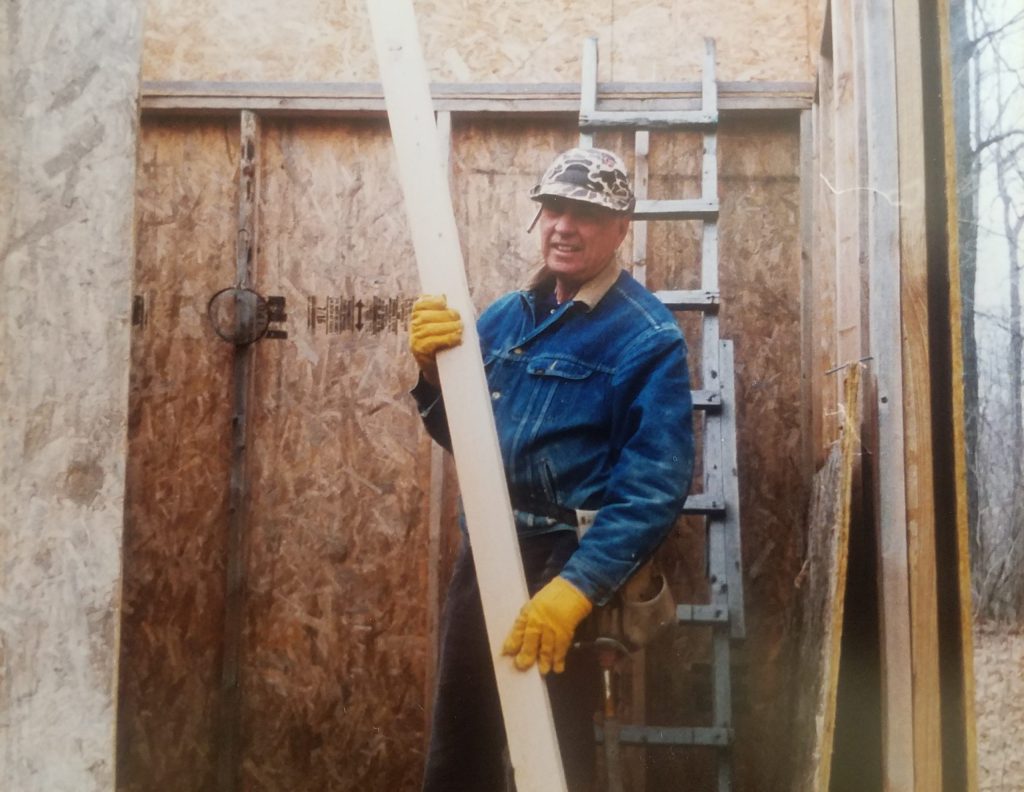
At first, I would hang one-gallon pails onto the maple trees, as I didn’t know how much sap I would get. The sap would run fast at times and sometimes overnight, the pail would fill and the sap would spill over the sides. Then I started using larger pails, eventually getting to a five-gallon drywall pail. I made a hole in the side that the tap would go into. I was then able to put the lid on the pail to keep the rain and snow out, so it wouldn’t dilute the sugar content in the sap. I would still use a hand crank drill to drill a hole in the tree and used it till the end of my maple syruping days. I just had a little operation, so it wasn’t that bad using a hand-cranked drill. If I really concentrated on it, I would get 50 to 60 gallons of sap a year, so that would make about 1 ½ gallons of syrup. But it all depends on the weather. It has to be above freezing during the day and below freezing at night for the sap to run.
Once I had the sap, I had to cook it down quite a bit. Sometimes, I would bring the sap home to cook it. Later, I just cooked it in the woods. In order to cook the raw sap down, I made a little fire pit with cement and mortar. It was three-sided and about 20 inches in height. The front of the pit was open so I could put wood in to feed the fire. I had a business friend, I think it was Bob Kearns, make a cooking pan for me out of sheet metal. The cooking pan was about 36 inches by 36 inches and it would sit on top of this makeshift cooking pit. The pan would hold the sap and the sap would evaporate from the heat of the fire below to eventually become syrup. I don’t know, but my little makeshift maple syrup contraption is probably still out in those woods.
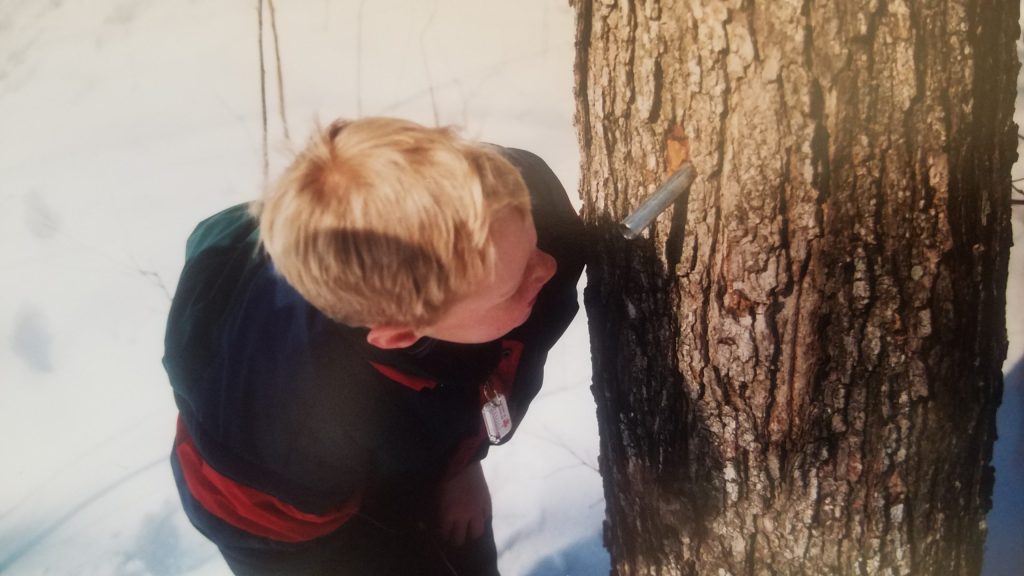
It could be a long day sitting out there in the woods by myself, watching the fire. Before I started cooking, I would have to make sure that I had enough wood to keep the fire going. I would start the fire on cooking day in the morning. Most of the time, I would refill the pan with sap during the day. It would take me about two full days to cook down the sap into syrup. I know some people use thermometers to monitor the sap when cooking, but I never did. I gave it the taste test and after a while, I just got to know when it was done. I never did burn the syrup. Maybe I got lucky.
I also built a sugar shack, which was only a little bigger than the size of an outhouse. I made it eight feet by eight feet because that was the size of the plywood. I just used raw plywood for the sides and I threw some tarpaper on the roof and sides. It was a real shack and I used it for storing a chair, the pan, the buckets, and taps during the off-season. During maple syrup season, I could go in the shack to keep dry if it started to rain. It was a little cold out in the woods sometimes and the shack also would protect me if the wind started up. There wasn’t room to have a fire inside the shack, so it was just to keep me out of the elements.
Some maple trees would run better than others during the syrup season and would give me 40 gallons of sap in one season. Some wouldn’t give me anything. I got to know which trees were the best runners so I always would tap those trees and in later years, I just tapped the two best trees.
I never had the purpose of selling any of my maple syrup. I just wanted to tap trees and make maple syrup because my dad used to and I wanted to pass what my dad taught me down to my kids and grandkids. I also continued tapping trees so we’d have some maple syrup for pancakes and cinnamon rolls at home. I did the maple syruping for a long time. I think I did it for about 40 years, ending it only a few years ago. By the end of each syrup season, it was always a little burden, but by the next March, I would want to do it again. During these days of March, I am thinking of the woods, the running sap, and feel good that someone is still tapping those trees in the woods.


